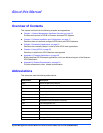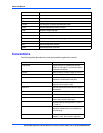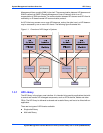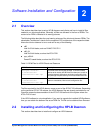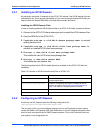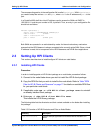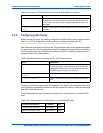
HPI Daemon System Management Interfaces Overview
System Management Interface Based on HPI-B (Centellis 4620) User’s Guide (6806800D85A)
15
The single shelf library supports the communication with one HPI daemon only. Since it is only
used internally and is not intended to be used by user applications, it will not be described any
further in this manual. The multishelf library, on the other hand, supports the communication
with one up to several HPI daemons. This becomes necessary if you wish to deploy redundancy
in one HPI-B based shelf management system or if you wish to manage several shelves. The
multishelf library is the library which you should build your applications on, it is the official
interface to customer applications.
Details about supported combinations of CPU architecture/Linux distribution are given in
Chapter 2, Software Installation and Configuration, on page 17.
1.3.2 HPI Daemon
The HPI daemon within an Centellis 4620 system runs on the ATCA-F120 blades and its main
tasks are:
z Provide a single access point to control and monitor hardware components in a shelf
z Map information provided by the underlying Shelf Manager to HPI
1.4 High Availability
The Emerson HPI-B implementation described in this manual supports the following two
redundancy options:
z Active/active
z Cold-standby
The active/active option is the default configuration. Both HPI daemons in shelf are active and
run simultaneously. Your application connects to one daemon and if the connection fails it
connects to the second daemon. Note that the current HPI-B implementation does not replicate
any data between the two daemons, this means data consistency is not guaranteed.
Alternatively you may choose to use the cold-standby redundancy option. In this configuration
your application must make sure that only one HPI daemon is active at a time. If the daemon
fails, your application starts up the second, previously inactive daemon and connects to it.
During start-up the HPI daemon scans the current system environment. This way it is ensured
that the daemon reflects the current system configuration.





